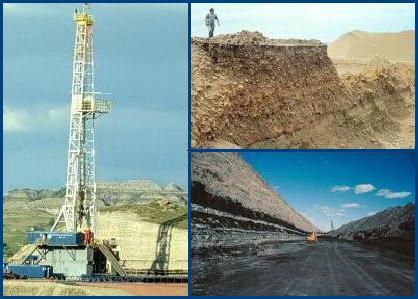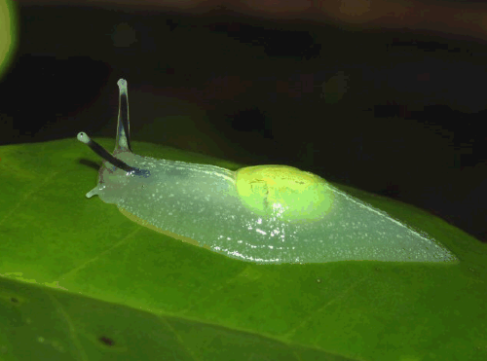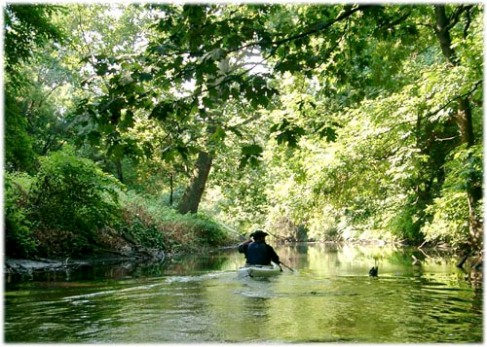Chapter 20 covers water pollution, which, as the name implies, is any harmful change in water quality that makes it unfit for human consumption or uses. Pollution normally involves chemical contamination, or heat—thermal pollution. Water pollution is dangerous, as it causes illness and death in humans and other species, and disrupts ecosystems. Water is without doubt essential for human survival, as well as the overall wellbeing of the earth and its ecosystems! We are a watery planet, and it is of the utmost importance that we keep the water as clean as possible to ensure our health and that of the environment. Water pollution is most-often caused by agricultural activities, industrial facilities and mining. Population growth and resource use have exacerbated these problems. Streams and rivers are important water systems, that these days are extensively polluted. Interestingly enough, they can cleanse themselves (the wonder of nature, so much smarter than us, huh!) through a combination of dilution and waste-breakdown. However, this process cannot function when streams become overloaded with pollutants, or when flow is reduced through drought, dams, or water diversion. Also, it is important to note that this process can only remove biodegradable wastes, not nondegradable wastes like plastic. Stream pollution has become a very serious and growing problem in developing nations, especially since many of the populations depend on rivers for drinking, bathing, and the washing of clothing. Regarding groundwater and drinking water, major pollution problems have taken their toll on these essential sources of water. Humans have been really dirty with their water, as chemicals used in agriculture, industry in general, transportation, and in daily life have spilled into ground water and made it undrinkable. Pollutants from underground tanks simply saturate aquifers, and continue spreading from there. There are multiple responses to this problem, attempts to purify groundwater through various methods. However, the most effective way of combating pollution is prevention; it is the least expensive and most efficient strategy. Ocean pollution is a growing and frequently misunderstood problem. The majority of the pollutants at hand originate on land, and include oil, various toxic chemicals, as well as solid waste. These pollutant threaten fish and wildlife, and disrupt marine systems overall. Natural capital is degraded by pollution from residential areas, factories, and farms. Construction sites wash sediments into waterways. Farms runoff pesticides, manure and fertilizers. Industry creates nitrogen oxides, toxic chemicals, and heavy metals that flow into bays and estuaries. Cities spread toxic metals and oils, as well as sewage that adds nitrogen and phosphorous. Urban sprawl continues the damage, which spreads by way of runoff. The key to protecting oceans is, almost too obviously, to reduce the flow of pollution from land, air and streams that empty into ocean waters. In order to best deal with water pollution, we must prevent it, work with nature to treat sewage, reduce our use of resources, cut down on waste, and address societal issues like poverty and overgrowth of population. There are sustainable answers to the problem of water pollution, like recycling of water, working with natural sewage treatment methods, and the reuse of treated wastewater. All of these work with the principle of sustainability. The most important question of all is simply: how can we avoid polluting in the first place?

Chapter 21 covers solid and hazardous waste. Solid waste is perhaps the ultimate culmination of our consumption, it is all the unwanted and discarded material produced by human lifestyles. There are both industrial solid waste, produced by the major industries, like mines and farms, and municipal solid waste, also known as, garbage, which is produced by homes and workplaces. Solid waste really contributes to pollution, as many of these objects are burned in incinerators or buried in landfills. The Organization for Economic Cooperation and Development projected that by 2030, the world’s output of municipal solid waste will just about double. Another large category of waste is hazardous waste, which is poisonous, chemically reactive, corrosive or flammable. Needless to say, this kind of waste poses a serious threat to human and ecological health. Hazardous waste comes in multiple forms, including: organic compounds, like pesticides and solvents, toxic heavy metals, like lead and arsenic, and radioactive waste produced by nuclear power plants and weapons facilities. According to the UN Environment Programme, more-developed countries are the culprits, producing 80-90% of the world’s hazardous waste. And guess what? The United States is the top producer, due to our military, and chemical and mining industries. China follows us closely, due to its continuous industrialization without sufficient pollution controls. So, how can we deal with these scary wastes? To sustainably handle solid waste, first we must reduce it, then reuse or recycle it. Once we’ve got things a bit more under control, we then must safely dispose of whatever is left. There is no single solution to this problem, and most analysts call for the use of integrated waste management, which is a coordinated method of strategies for waste disposal and reduction. Scientists and economists both advocate for reduction of solid waste through methods of reducing, reusing and recycling. Reusing is important for many reasons; it saves money, decreases the consumption of matter and energy resources, and reduces capital degradation. Recycling, both primary and secondary, does as well, although to a lesser degree than reusing. Recycling reduces energy usage, greenhouse gas emissions, and solid waste, however it can be more costly than landfills, reduces profit for landfill and incinerator owners, and can be inconvenient for some. As far as the burying or burning of solid waste, there are several advantages and disadvantages. Technologies are well developed, but as a whole, both burning and burying of solid waste contributes to air and water and land pollution, emits greenhouse gases, and degrades land and water resources. In order to transition to a more sustainable, low-waste society, individuals and businesses must reduce their use of key resources, and reuse and recycle wastes, at from local all the way to global levels.
Chris Jordan, a photographer, depicts the massive scale of consumption patterns in contemporary society. His photographs of Midway show the final destination of our plastic products: inside the stomachs of baby albatrosses, whose parents mistakenly feed their babies plastic. The carcasses of the creatures are simply filled with bits of plastic, some of it recognizable and easy to associate with an object, others no. Still, his work really is striking, and definitely a motivator to cut down on plastic consumption, and a reflection upon the ills of consumerism and industry. His work reminded me of another artist, who I discuss below.
These chapters, especially Chapter 21, really rang true with my experiences, and built on concepts previously covered. Chapter 21 made me reconsider a lot of my personal consumption, and instilled a greater sense of awareness in me, especially regarding the thoughtlessness of contemporary consumption. We are raised with the thought that whatever we throw out simply disappears. Perhaps we have a vague image of what a landfill looks like, or that we should throw out our bottles in the recycling been, but our images tend to end with the bin, not with the true ending of all our consumption. I went to a Garbology meeting, and that was a wakeup call for me. True visual representation of what Fordham students consume was crazy! As a Lincoln Center student, it made me wonder how the consumption here compares with that of Rose Hill. We have a smaller student body, but are we more conscious consumers? Hmm…certainly something to think about! The idea of visually representing consumption really is powerful, and can be a way to force people to reconsider their consumption patterns. There is a Brazilian artist, Vik Muniz, who creates these beautiful images on a grand scale out of trash. There is a documentary about his work that I highly recommend called Waste Land, it is available on Netflix! In this documentary, he works with the trash pickers of Rio’s biggest dump, Jardim Gramacho, and has them pose as famous classic images, which he later reconstructs out of the very trash they work with! Talk about a closed cycle system! The resulting images are powerful and strikingly beautiful reminders of the materials we leave behind. The original title in Portuguese was Lixo Extraordinário, which translates to extraordinary garbage. I think this title is perhaps stronger, and reminds us that the whole notion and structure of trash disposal is a strange, strange process. This really speaks for art as a form of social commentary, no?

Blog Questions:
How can we inspire younger generations, who are more firmly embedded in “throw-away culture,” to become more thoughtful consumers?
Besides photographic and sculptural art, what is another medium that has really depicted the dark side of consumerism? Any artists that you know of?















Recent Comments